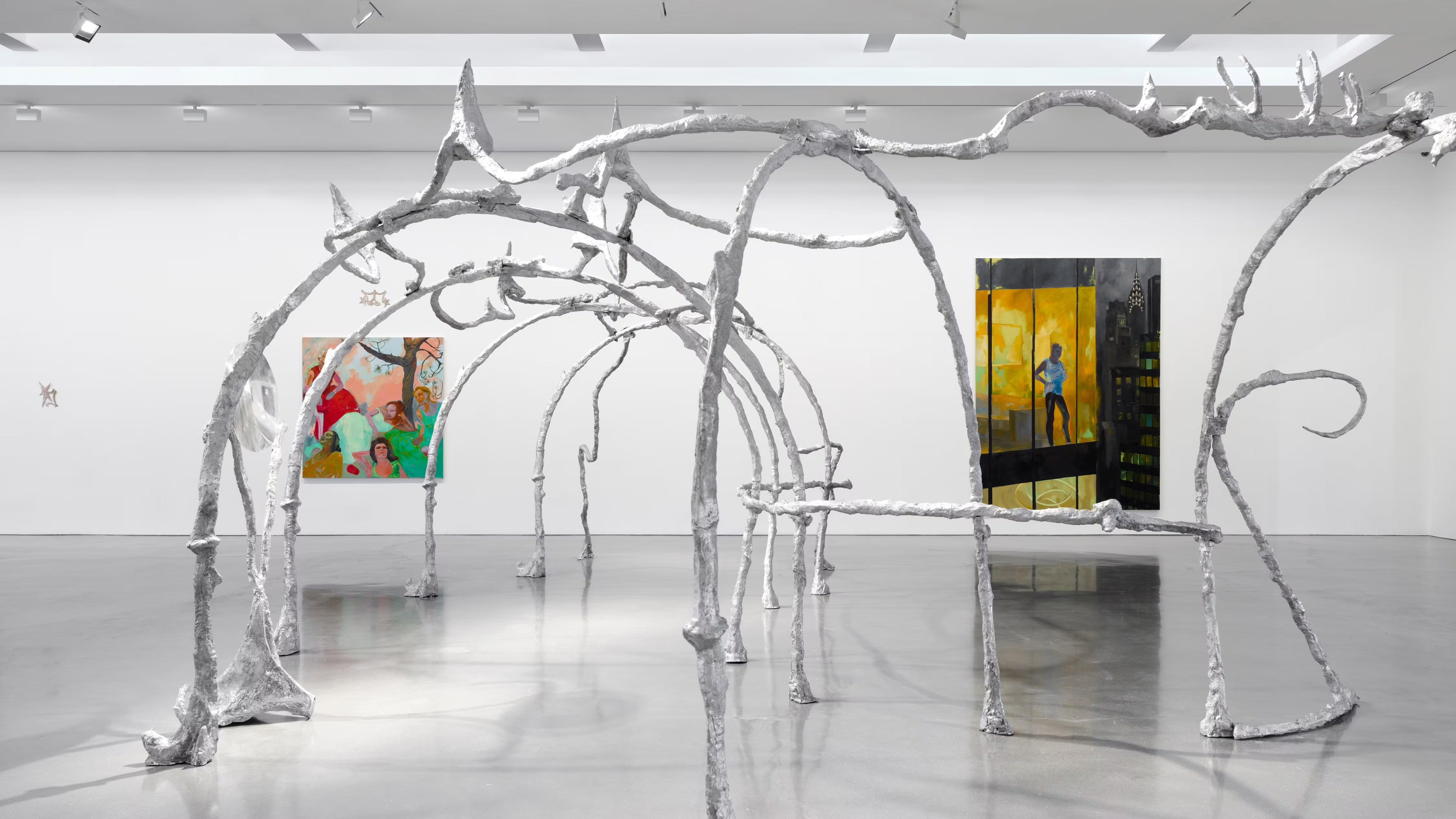.avif)
Morgan Becker told me about High Valley Books. At first I thought I didn’t know what she was talking about. Then I realized I’d seen these full-length pics of magazine editors and fashion photographers posed in the same hallway. Always in their best low-key book-shopping fits, clutching their new-old printed matter finds. Girls with a real passion for fashion—Sam Penn, Taylore Scarabelli, Sofia Coppola, you know.
I asked Maya Kotomori if she wanted to meet me at the appointment-only Greenpoint space because she has the right combination of exuberant intellectual curiosity and effortless chic I thought matched the occasion. Everything’s more fun with a friend, and also I get easily overwhelmed by a lot of choices. I’d already seen a video of the sheer volume of books in the basement of High Valley, and that kind of dizzying abundance can make me shut down if I’m flying solo. Fashion, photography, interiors, architecture, graphic design, fiction, cooking—High Valley Books has it all. But Maya also injected an element of narrative into our afternoon: she arrived at an archive chock full of fashion magazines straight from quitting her job at a fashion magazine. I think this qualifies as ironic.


Walking in, the first thing I spotted was a 1992 copy of Paper magazine with Isabel Toledo on the cover. The opening spread featured two ads, for the Odeon and Geoffrey Beene. Maybe it’s trite to say something like, “gazing upon this magazine, I instantly felt like I was in the right place,” but I’d just finished working with Paper co-founder Kim Hastreiter on her memoir Stuff: A New York Life of Cultural Chaos. That intimate proximity to Kim’s story, had helped me connect the dots between things I knew about and things I didn’t. For example, I’d been a hostess at the Odeon, so I knew that part of the puzzle, but Kim was the one that taught me about Toledo and Beene. These are the kinds of interconnected stories I love that are told from old magazines.
The 1992 issue of Paper was featured prominently on the parlor floor at High Valley. So was a collection of 1990s Artforums faced backwards creating an installation of sorts, spotlighting how the back cover for many, many years featured advertisements from the same Swiss outfit, Galerie Bruno Bischofberger. There were some early digital relics, too, including a floppy disk with the Jil Sander logo that I was told was not for sale.
.avif)
Next, we headed down to the infamous basement, where High Valley Books proprietor Bill Hall chatted to us about his origin story—studying English Literature, then moving to New York to be a painter—while he rifled through the shelves.
“I’m actually looking for a book for you,” he informed Maya, who’d previously informed him of her recent change in employment status. “It’s called What Color is Your Parachute?” Originally published in 1970, the self-help book is described as “an invaluable resource for anyone seeking career guidance.”
.avif)
Maya was a bit skeptical the advice would be out of date. And while Bill never found the book, he proved an invaluable resource himself, an affable nerdy dad who’s built a refuge for the like-minded. Any book you picked from the shelf, he seemed to have some relevant trivia to share. One of my finds was Elsa Maxwell’s R.S.V.P., a 1950s memoir by the glitterati gossip columnist born in Iowa who was friends with Salvador Dali. I’d never heard of Maxwell before. Bill gushed to me about her mythologized charisma and the elaborate photoshoots she would put together for Christmas Cards she’d send to her friends. On his laptop, he pulled up a black-and-white photo of her skiing down a roof, posed with poles haphazard as if mid-fall, wearing a sweater that read “SATAN.”
Bill said if he has a “superpower,” it’s “refusing to admit reality.” For many years people around him seemed unconvinced that a bookstore and archive was a smart business endeavor. Isn’t print media dying? But now it’s exactly because of the consequential rarity of print that Bill’s niche interest is paying off. “Just look at me now,” he joked, “I’m being interviewed in my basement.”
















.avif)


_result_result.avif)



.avif)

_result_result.avif)

_result_result.avif)
.avif)

_result_result.avif)


_result_result.avif)


.avif)




.webp)

.avif)















%20(1).avif)
.avif)




.avif)










.avif)


.avif)





















.jpeg)

.avif)

_11%20x%2014%20inches%20(2).jpg)







.avif)

.jpg)

%20(1).jpg)
.avif)
.jpg)

.jpg)
.webp)


.webp)



.webp)


.webp)


.avif)












.avif)
.avif)












.avif)



.avif)




















-min_result.avif)









.avif)







3_result.avif)
_result.avif)






_result.avif)




.avif)




.avif)













_result.avif)




%2520(1)_result.avif)
_result.avif)


_result.avif)

_result.avif)



.avif)

.avif)






.avif)














.avif)


_result_result.avif)
















-min_result.avif)






.avif)
.jpg)
















_result.avif)

.avif)


.avif)







.avif)





.avif)

_result.avif)















.avif)


.avif)














.avif)




.avif)








.avif)

.avif)

.avif)



.avif)


.avif)




.avif)

.avif)

.avif)
.avif)
%20(1).avif)
.jpg)

%20(1).avif)








.avif)
.avif)

.avif)






.avif)


.avif)
.avif)



.avif)
.avif)
%20(1).avif)

.avif)
.avif)



















.avif)
.avif)
